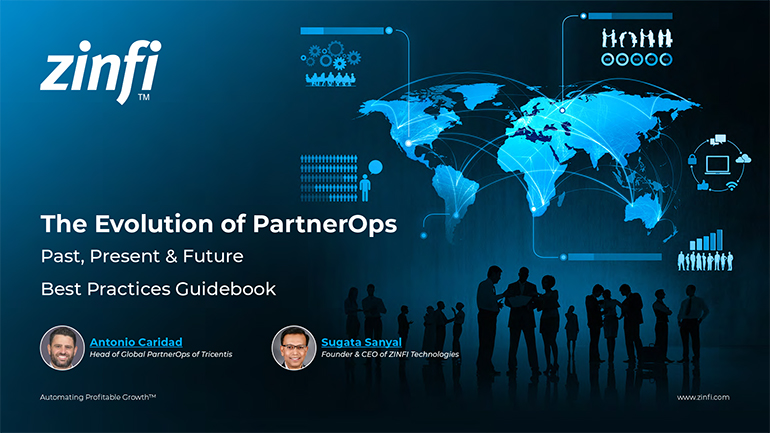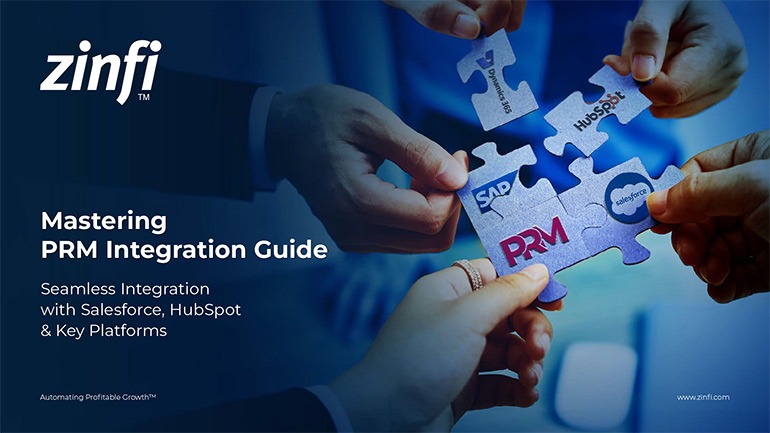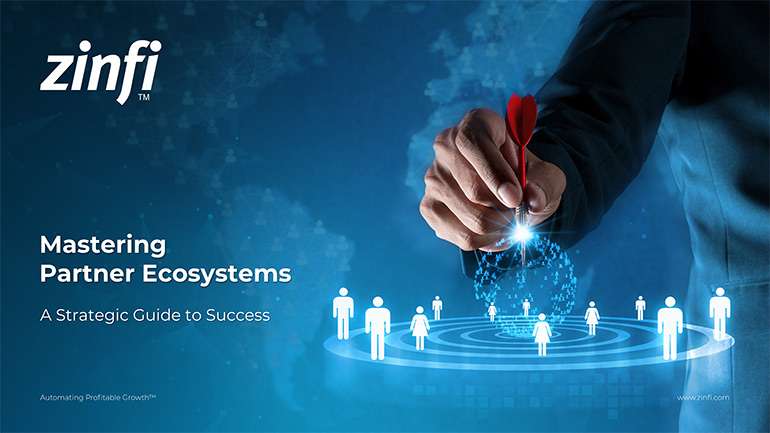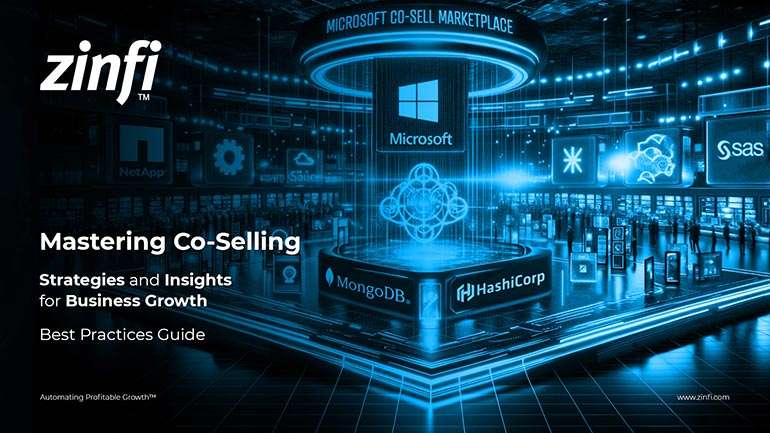Best Practices Articles

Why CRMs Don’t Work As Partner Relationship Management Systems
Customer relationship management (CRM) has evolved into a multi-billion dollar segment, with good reason. However, the Partner Relationship Management (PRM) category is relatively new, even though channel programs have been around for many decades. Why is that?
Well, phone systems for tracking and taking better care of customers were essentially started by the airline industry back in the late Sixties and early Seventies as the volume of ticketing requests and changes began to grow. Next, in the Eighties and Nineties, as computers took over the business environment, contact management software evolved as the better version of a Rolodex.
Starting in the mid-Nineties, contact management software started to evolve into the precursor to what we now know as a customer relationship management. This development was driven by companies like SAP and the like, who were focused also on processes like inventory management and financial controls as features of their enterprise resource management software.
Salesforce.com took a visionary role in taking on-premise sales management software to the cloud and deservingly became market share leader in this category. This category further evolved to provide a combination of three core functionalities - marketing automation integration, sales process automation and support.
However, comparatively little time or resources have been devoted by the CRM market leaders to building a purpose-built application that addresses the workflow of channel management. Focused on solving the horizontal problem of Salesforce automation, the bigger players have overlooked the need to address channel marketing automation by development purpose-built applications like partner relationship management (PRM).
Typical CRM software includes core management and tracking functionality such as leads, contacts, opportunities, tasks and projects, that allow a sales person to develop prospects and track them through to close a sale. Most CRM systems do a good job of sales tracking and post sales account management activities by linking modules like tasks, calendars, quotations and invoicing. There is a plethora of other applications that can be added to extend some of the core CRM functionalities for channel management purposes. However, the main challenge with this approach is to take a horizontal product that works for B2B sales, and make it functional in a very different environment. Channel sales, for a start is a two to three tier process, and it gets even more complex than that.
Channel marketing entails a whole different set of requirements for functions including partner recruitment, partner engagement, partner enablement and partner management, that are not addressed by current CRM systems. Almost all CRMs provide excellent functionality for contact management, tracking sales activities, reducing labor needed to send out a quote, close a sale, or grow a current account, but almost none are able to adapt to the dynamic, multi-tenant environment that is a prerequisite for any channel management structure.
Almost all channel management activities require constant recruitment of existing and/or new resellers into a specific set of programs, plus integrated outbound marketing tools that none of the CRM tools offer today. Once a partner has been recruited, they must be properly classified, or profiled and to be clustered into a specific group of vertical or other classifications, but most CRMs today are not flexible enough to complete this profiling activity.
As a further example, it is essential to track training progress and development of that partner’s competence. While there are standalone learning management systems that could potentially be patched into an existing CRM program, the majority are not flexible enough for this. As a result, CRM software doesn’t allow channel account managers to determine their partners’ evolving technical skill level, which is a critical requirement for B2B IT solutions sales. These and other needs call for purpose-designed applications like partner relationship management software.
If partner recruitment, engagement and training are the core gaps in an existing CRM system, the challenges of generating demand via a set of channel partners and enabling them with market development funds (MDF), sales rewards and rebates are only exaggerated by using a typical CRM. As a result, many organizations take the DIY approach of building their own in-house campaigns, assets, MDF, rewards and rebates forms. But these are rarely well-integrated and quickly become too complex ever to be productive. This leads to poor ROI from the effort and investment of recruiting and training partners.
With CRM systems so evidently unfitted for channel marketing purposes, what automation tools can an IT vendor use to improve partner productivity? The answer is to use Partner Relationship Management (PRM) software. There are several newer vendors, small yet powerful, who provide a wide set of options for technology vendors selling through the channel. PRM solutions like ZINFI’s, are purpose-built for channel management and marketing. ZINFI’s platform allows vendors not only to pick the right set of partner recruitment, training and enablement tools to drive demand, but also create a channel marketing management infrastructure by deploying market development funds (MDF), rewards and rebates. These are all capabilities that none of the CRM applications today can match.
Best Practices Guidebook
 How to Start and Scale Partner Ecosystems Best Practices
How to Start and Scale Partner Ecosystems Best PracticesDownload Guide
 The Evolution of PartnerOps: Past, Present & Future Best Practices
The Evolution of PartnerOps: Past, Present & Future Best PracticesDownload Guide
 Mastering Channel Sales: Strategies, Best Practices, and Growth Tactics for 2025
Mastering Channel Sales: Strategies, Best Practices, and Growth Tactics for 2025Download Guide
 Winning with Partner Advisory Councils: Best Practices for Partner Engagement & Growth
Winning with Partner Advisory Councils: Best Practices for Partner Engagement & GrowthDownload Guide
 The Future of Partner Ecosystems Best Practices
The Future of Partner Ecosystems Best PracticesDownload Guide
 The AI Revolution: How Technology and Talent are Shaping the Future
The AI Revolution: How Technology and Talent are Shaping the FutureDownload Guide
 Top 105 Partner Management Metrics that Matter Best Practices
Top 105 Partner Management Metrics that Matter Best PracticesDownload Guide
 Mastering PRM Integration Best Practices
Mastering PRM Integration Best PracticesDownload Guide
 Building a Sales Partner Portal with Salesforce Best Practices
Building a Sales Partner Portal with Salesforce Best PracticesDownload Guide
 Building and Managing Partner Ecosystems Best Practices
Building and Managing Partner Ecosystems Best PracticesDownload Guide
 Mastering Co-Marketing and Co-Selling Best Practices
Mastering Co-Marketing and Co-Selling Best PracticesDownload Guide
 Transforming Partner Ecosystems Best Practices
Transforming Partner Ecosystems Best PracticesDownload Guide
 Mastering Partner Ecosystems Best Practices
Mastering Partner Ecosystems Best PracticesDownload Guide
 Mastering Partner Onboarding Best Practices
Mastering Partner Onboarding Best PracticesDownload Guide
 Partner Ecosystem Management Best Practices
Partner Ecosystem Management Best PracticesDownload Guide
 B2B Marketing in the Age of Intelligence Best Practices
B2B Marketing in the Age of Intelligence Best PracticesDownload Guide
 Multi-Partner Co-Selling Best Practices
Multi-Partner Co-Selling Best PracticesDownload Guide
 A Guide to Enhance Channel Sales Efficiency
A Guide to Enhance Channel Sales EfficiencyDownload Guide







